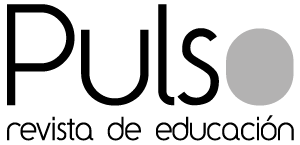Visual culture as an instrument for the enhancement of the Spanish rural landscape at the beginning of the 21st century. La Vall de Boí as a case study
DOI:
https://doi.org/10.7203/eari.15.26414Keywords:
Rural, cultura, paisaje, arte, naturaleza, educación. Abstract
Abstract
The artistic and visual expressions produced in relation to the rural world in the different areas that make up visual culture result in cultural manifestations with contents closely related to the rural landscape and its natural spaces. In this way, they contribute to the perception of the aesthetic richness of the rural environment, thus promoting its enhancement and interest in these less populated territories and far from the areas of power. However, it is likely that each discipline related to visual culture contributes in a specific way to this enhancement of the rural landscape, from those that do so in a more poetic way —with an aesthetic aspect— to those that develop in a pragmatic way —with a systematic and functional background. From this line of research, we try to elucidate these aspects with the aim of defining and classifying how each of the artistic and visual disciplines uses the rural landscape to apply it to dissemination and artistic education projects. Thus, we will try to understand the possibilities offered by visual culture when it comes to capturing the aesthetic values of the rural landscape and see how it contributes to the achievement of sustainable development models for the XXI century. We will seek to do so through artistic education as a tool for mediation and visual culture as an instrument of enhancement.
 Downloads
Downloads
 References
References
Albelda, J. (2004). Territorios, caminos y senderos. Fabrikart: arte, tecnología, industria, sociedad, (4), 100-113. [Archivo PDF].
Centre del Romànic de la Vall de Boí. (s.f.). El (re)descubrimiento del Románico de la Vall de Boí. La Misión Arqueológica de 1907. [Archivo PDF].
Cortés, J. (2018). Arte contemporáneo versus mundo rural o la identificación de arte y vida desde la periferia. El Museo Vostell Malpartida como paradigma. En M. M. Lozano (Coord.), Paisajes culturales entre el Tajo y el Guadiana, pp. 217-238. Universidad de Extremadura.
El cubo verde. (s.f.). El cubo verde Manifiesto [Archivo PDF].
Font, J. (2020). El mapping de Sant Climent de Taüll. Nova llum per a la museografia, un revulsiu per a la Vall de Boí. Mnemòsine: revista catalana de museologia (10). http://revista.museologia.cat/ct/article/el-mapping-de-sant-climent-de-taull-193
Fulton, H. (2018). Walking on the Iberian peninsula. [Archivo PDF]. Bombas Gens. https://www.bombasgens.com/wp-content/uploads/2018/03/Catàleg-Fulton-definitiu.pdf
González, J. M. y Escanilla, A. (2020). La relación de los museos con el paisaje y su repercusión didáctica. Estado de la cuestión y ejemplos en Extremadura y Aragón. Investigación en la escuela, (101), 83-95.
Guardia, M. y Lorés, I. (2020). Sant Climent de Taüll i la vall de Boí. Barcelona: Universitat Autònoma de Barcelona.
IVAM (s.f.) CONFLUÈNCIES, intervenciones artísticas en el medio rural. https://ivam.es/es/exposiciones/confluencies-intervenciones-artisticas-en-el-medio-rural/
Izquierdo, J. (2012). La casa de mi padre. KRK.
Lozano, M. M. (2018). Diálogos y constelaciones. Performances e instalaciones en el Museo Vostell Malpartida de ocho artistas contemporáneos. En M. M. Lozano (Coord.), Paisajes culturales entre el Tajo y el Guadiana, pp. 257-279. Universidad de Extremadura
Maderuelo, J. [dir.] (1997). El paisaje. Arte y naturaleza. Diputación de Huesca.
Maderuelo, J. [dir.] (2007). Paisaje y arte. Abada.
Maderuelo, J. [dir.] (2008). Paisaje y territorio. Abada.
Mapping St. Climent de Taüll by Burzon*Comenge & Playmodes. (2013). https://pantocrator.cat/
Mateos-Rusillo, S. M. (2020). La copia en la gestión del patrimonio artístico. El valle de Boí, paraíso de las copias. Goya: Revista de arte (373), 263-273.
del Molino, S. (2016). La España vacía. Turner.
Nogué, J. y de San Eugenio, J. (2011). La dimensión comunicativa del paisaje. Una propuesta teórica y aplicada. Revista de Geografía Norte Grande (49), 25-43.
Nogué, J. y de San Eugenio, J. (2017). La contribución del paisaje visual en la generación de marcas territoriales. Boletín de la Asociación de Geógrafos Españoles (74), 143-160.
Nogué, J. (2005). Paisatge i identitat territorial en un context de globalització. Treballs de la Societat Catalana de Geografia (60), 173-183.
Nogué, J. (2016). El reencuentro con el lugar: nuevas ruralidades, nuevos paisajes y cambio de paradigma. Documents d'anàlisi geogràfica, 62(3), 489-502.
Pérez, J. (2017). Bosquera. Bandaàparte Editores.
Redondo, M. (2013). Sand Castles II. Markel Redondo Studio. https://www.markelredondo.com/photos/sand-castles-1/
Redondo, M. (2018). Sand Castles II. Markel Redondo Studio. https://www.markelredondo.com/photos/foto-proyecto-6/
de San Eugenio, J. (2006). La interpretación del paisaje como instrumento de comunicación con la sociedad. Aportaciones de la semiótica y de los procesos de participación ciudadana. F@ro: revista teórica del Departamento de Ciencias de la Comunicación (4), pp. 1-13.
Sánchez, M. (2019). Tierra de mujeres. Seix Barral.
Siou, H., Boudot, A. y Delouvrier, M. (2020). Viaje por las Españas deshabitadas. Salvaje (3), 26-42.
Walid, S., Camón, L., Piccione, A., Montesino, M., Lozano, L. et al. (2022). Culturarios. Humus de iniciativas culturales en el campo. PACAbooks.
Downloads
Published
How to Cite
-
Abstract8
-
PDF (Español)7
Issue
Section
License
![]()
Educación artística: revista de investigación (EARI) retains the proprietary rights (copyright) of published works, and favors and allows the reuse of the same under the license Creative Commons Attribution-Noncommercial Use 4.0 International License (CC-BY-NC 4.0), which allows third parties to use the published material whenever the authorship of the work and the source of publication is mentioned (journal, publisher and URL of the work), and it is used for non-commercial purposes.
Authors are encouraged to disseminate their work after it has been published, through the internet (for example, in institutional archives online or on its website) which can generate interesting exchanges and increase work appointments.








